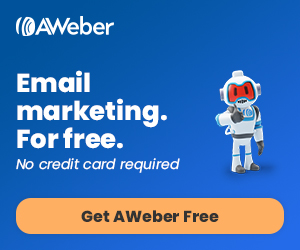Experiential Learning (Hands-on is paramount)
Product Demos & Walkthroughs
The absolute best way to learn. Let them use the product, click around, and see it in action. If it's a physical product, let them touch, feel, and assemble it.
The absolute best way to learn. Let them use the product, click around, and see it in action. If it's a physical product, let them touch, feel, and assemble it.
Role-Playing & Scenario-Based Training:
Simulate real customer interactions (sales calls, support chats, marketing pitches). This helps them practice articulating benefits, handling objections, and troubleshooting.
Simulate real customer interactions (sales calls, support chats, marketing pitches). This helps them practice articulating benefits, handling objections, and troubleshooting.
"Eat Your Own Dog Food" (or "Drink Your Own Champagne"):
Encourage employees to use the product themselves in their daily lives. This builds genuine understanding and enthusiasm.
Encourage employees to use the product themselves in their daily lives. This builds genuine understanding and enthusiasm.
Microlearning & Just-in-Time Learning
Bite-Sized Modules:
Break down complex product information into short, digestible units (e.g., 3-5 minute videos, infographics, quick quizzes). This prevents overload and aids retention.
Centralized Knowledge Base: Create an easily searchable and accessible repository of all product information (FAQs, manuals, troubleshooting guides, competitive comparisons, sales playbooks). This allows for quick lookups "in the flow of work."
Break down complex product information into short, digestible units (e.g., 3-5 minute videos, infographics, quick quizzes). This prevents overload and aids retention.
Centralized Knowledge Base: Create an easily searchable and accessible repository of all product information (FAQs, manuals, troubleshooting guides, competitive comparisons, sales playbooks). This allows for quick lookups "in the flow of work."
Mobile Learning:
Deliver content via mobile apps so employees can learn on the go.
Deliver content via mobile apps so employees can learn on the go.
Interactive & Engaging Content
Gamification:
Introduce quizzes, leaderboards, badges, and rewards to make learning fun and competitive.
Multimedia: Use videos, animations, interactive diagrams, and engaging visuals instead of just text-heavy documents.
Case Studies & Success Stories: Show real-world examples of how the product solved customer problems. This makes the knowledge relatable and impactful.
Introduce quizzes, leaderboards, badges, and rewards to make learning fun and competitive.
Multimedia: Use videos, animations, interactive diagrams, and engaging visuals instead of just text-heavy documents.
Case Studies & Success Stories: Show real-world examples of how the product solved customer problems. This makes the knowledge relatable and impactful.
Customer Feedback Integration:
Share actual customer feedback (positive and negative) to give context to product features and areas for improvement.
Share actual customer feedback (positive and negative) to give context to product features and areas for improvement.
Continuous Learning & Refreshers
Regular Updates:
Products evolve. Schedule regular refresher training sessions to cover new features, updates, and market changes.
Products evolve. Schedule regular refresher training sessions to cover new features, updates, and market changes.
Feedback Loops:
Encourage employees to provide feedback on the training and the product itself.
Encourage employees to provide feedback on the training and the product itself.
Cross-Departmental Collaboration:
Foster communication between sales, marketing, support, and product development teams. This breaks down silos and enriches everyone's understanding.
Foster communication between sales, marketing, support, and product development teams. This breaks down silos and enriches everyone's understanding.
Tailored Training for Different Roles
Segment Audiences:
As a digital marketer, you'd want to focus on USPs, target audience pain points, and competitive differentiation. A sales team might focus on objection handling and pricing, while customer support needs technical details and troubleshooting.
As a digital marketer, you'd want to focus on USPs, target audience pain points, and competitive differentiation. A sales team might focus on objection handling and pricing, while customer support needs technical details and troubleshooting.
Define Objectives:
For each role, clearly define what specific product knowledge they need to acquire and what they should be able to do with that knowledge.
For each role, clearly define what specific product knowledge they need to acquire and what they should be able to do with that knowledge.

No comments:
Post a Comment